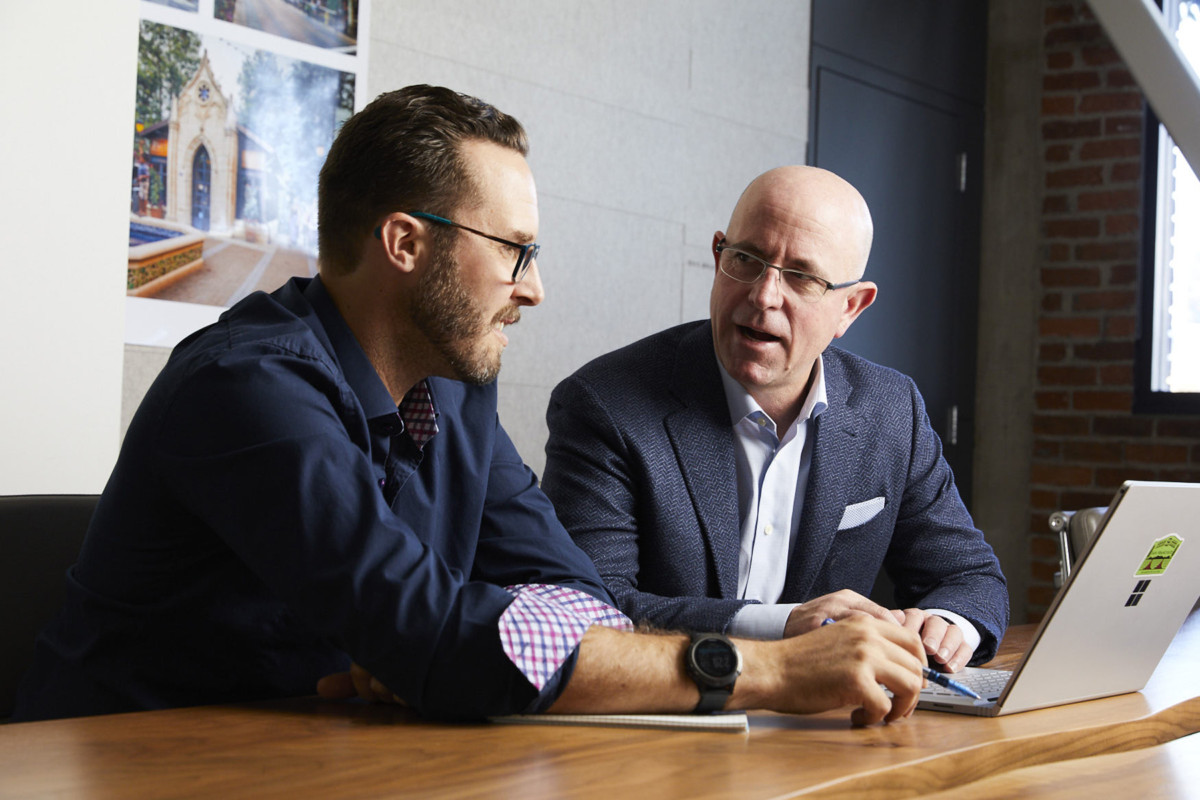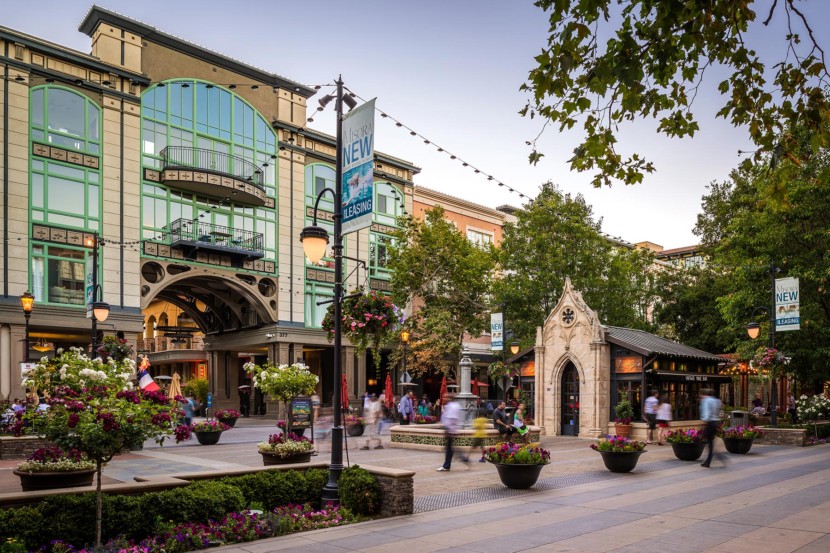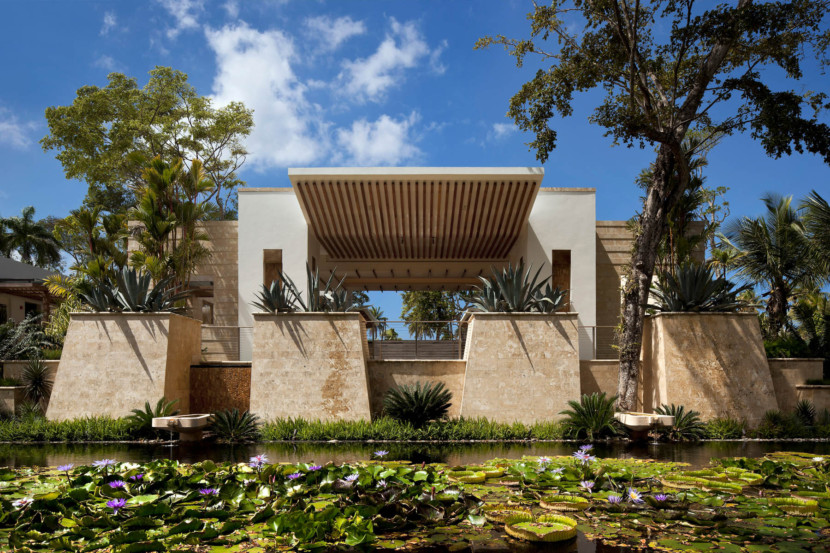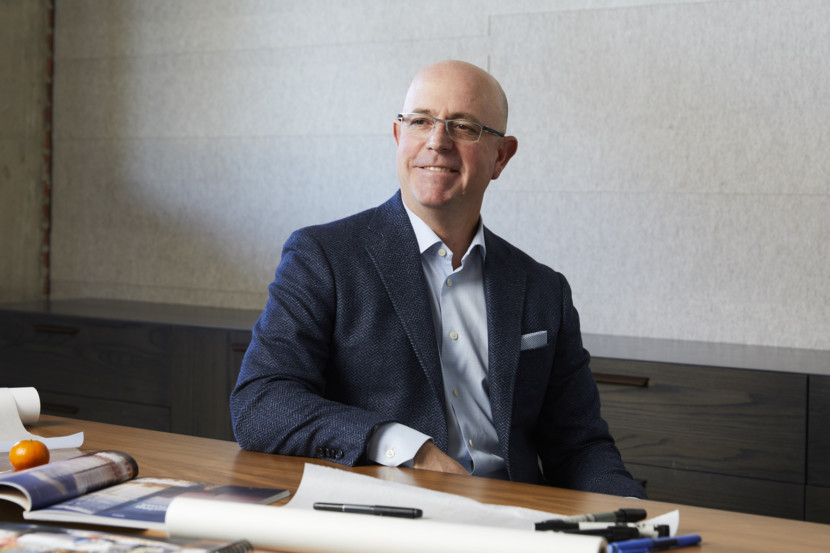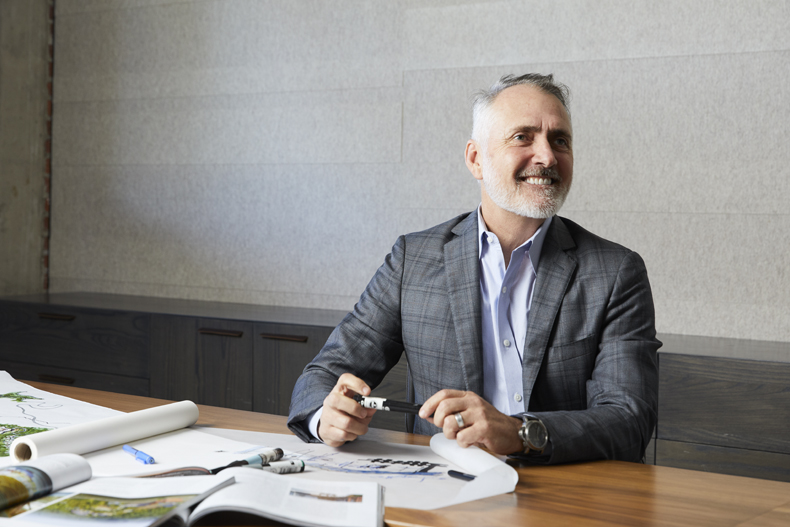SB Architects at 60
Tell us about SB Architects’ history and what it means to be celebrating 60 years in the industry.
Scott Lee, President & Principal: SB Architects’ history starts in San Francisco in 1960 with Donald Sandy and Jim Babcock. They were a visionary design powerhouse and natural marketers, who completed a series of groundbreaking residential projects, including eight of the early homes at Sea Ranch, putting Sandy & Babcock on the map internationally.
Both being avid travelers, they were eager to branch out away from the Bay area in search of international endeavors, which led to commissions throughout the US and abroad. In 1975, the opportunity to design the award-winning Key Colony condominiums in Key Biscayne established SB Architects presence in Florida and led to the opening of a second office in Miami. Don and Jim aspired to increase the scale and exposure of the firm in terms of building typology, so they began to expand into high-rise, mixed-use, and hospitality, securing high-profile projects like Fisher Island.
Over the last 20 years, design-focused hospitality has become our sweet spot. We create experiences that place people at the center of the design, connecting them with the place through a creative vision that celebrates the destination. We tell stories of the local culture, people, and history through thoughtful design solutions and take guests, residents, and visitors on a journey of exploration and discovery.
60-years is an incredible milestone to hit, and we couldn’t be prouder of the work we’ve completed, the firm we have created and the culture we have developed over the last six decades. Following a succession of incredible leaders including our visionary founders Donald Sandy and Jim Babcock, and previous CEO, Jim Eller, we are excited to see what the fourth generation of leadership has in store.
How has the firm grown and evolved over the years?
SL: The industry moves at such a fast pace, we are in a constant cycle of growth and strive for design excellence through continuous and agile evolution. When I started working for the firm in 2000, the aspiration was to grow our hospitality portfolio and geographic reach, alongside the current CEO, Jim Eller. Bruce Wright came on shortly after me and we began pitching for and winning hospitality projects such as Calistoga Ranch, California; the Ritz-Carlton Reserve Dorado Beach, Puerto Rico; and a few large-scale projects in the Middle East and Asia.
In the early 2000s, we recognized the potential that China’s ever-increasing market held for SB Architects. We began strategically focusing business development efforts in the region and began work on a number of large-scale hospitality and residential projects including Dreamtown in Shenzen, a luxury residential community, similar to Fisher island. Following on from this project, we increased our reach across China, the second-largest and fastest-growing economy in the world, with boots on the ground to increase our ability to service our clients at a moment’s notice. Over the years we have continued to foster our client relationships abroad, bolstering our portfolio internationally.
In 2002, our industry-leading urban mixed-use project, Santana Row in San Jose, California opened and was considered to be “the most ambitious project of its kind in the United States”. To build on this success, we invited Mark Sopp to join the team. We had all known each other for years, and Mark’s urban, mixed-use background, gained from his time as Director at Callison, where he helped build the retail and mixed-use practice, made him the perfect fit to join Bruce and me at the newly rebranded SB Architects.
We have always had a presence in the Caribbean, and we knew that our experience could be leveraged to forge further South into Latin America. In 2011, we made the strategic decision to hire Emilio Perez, an industry leader in the LATAM region. Having a leader on our team with Emilio’s regional hospitality experience provided us knowledgeable access to South America, Central America, and even helped to further our presence in the Caribbean.
Our approach is founded on a commitment to design excellence and is characterized by open communication and collaborative dialogue. Over the last 60-years, we’ve built solid relationships with our clients, brands, and design partners such as EDSA, HBA, and SKS; allowing us to create iconic spaces that accomplish our client’s goals and secure repeat business. Our relationship with developers such as Gencom is a great example, at one point, we had seven projects underway with them over a five-year stretch!
Now, as we enter our 60th year, we work in over thirty countries, on four continents, and we’re proud of our global reputation for architectural craft and leadership. We still enjoy and embrace our residential roots, but over the last 20 years, we’ve expanded our portfolio from two to 70 percent hospitality, established a dynamic team of passionate, collaborative, and creative individuals, and created award-winning destinations across the globe. We approach each new project with a fresh set of eyes and are constantly inspired by our clients and the places in which we work.
Can you tell us about some of SB Architects’ awards and accolades?
SL: I think beyond any award we submit for, the most important award for us is the acclaim of the user. My most memorable accolade was when Calistoga Ranch was showcased on the cover of Travel + Leisure in 2005. Our first international five-star hotel, Anassa in Cyprus, opened to critical acclaim in 1999 and was recognized by Condé Nast as one of the ‘world’s ten best new hotels’, which was a huge achievement, especially for one of our pioneering hospitality projects.
We were thrilled with the critical acclaim for our renovation of the Malliouhana, An Auberge Resort, the first hotel to be built on the island of Anguilla. We secured numerous awards, such as being named ‘Best Resort’ by Hospitality Design; ‘Best Oceanfront Hotel’ by Architectural Digest; and ‘Best of the Best’ by Jet Setter. The refresh and thoughtful design improvements we completed on the Malliouhana showcased our ability to turn an underperforming property into a luxury five-star resort destination, and we were thrilled to be recognized for that.
Bruce Wright, Senior Vice President & Principal: The award that stands out for me is the Grand Award for ‘Best Specialty Design’ we were awarded for Calistoga Ranch from the Pacific Coast Builder’s Conference Gold Nuggets Awards.
Mark Sopp, Senior Vice President & Principal: I’m proud of the accolades we achieved for the Kimpton Seafire Resort + Spa, Grand Cayman; including the CHRIS (Caribbean Hotel & Resort Investment Summit) Award for ‘Development of the Year’; ‘Caribbean Hotel of the Year’ by the Caribbean Journal; and being named as one of the ‘Best New Hotel’s in the World‘ by Travel + Leisure. The Kimpton Seafire was significant in many ways; it was Kimpton’s first foray into the international luxury and lifestyle resort market; their first Caribbean property; and Grand Cayman’s first new, ground-up hotel in over a decade. When the resort debuted in 2016, it dominated the market and set a benchmark for luxury design in Grand Cayman. To this day it continues to outperform other hospitality destinations in the Caribbean and consistently demands one of the highest ADRs on Grand Cayman.
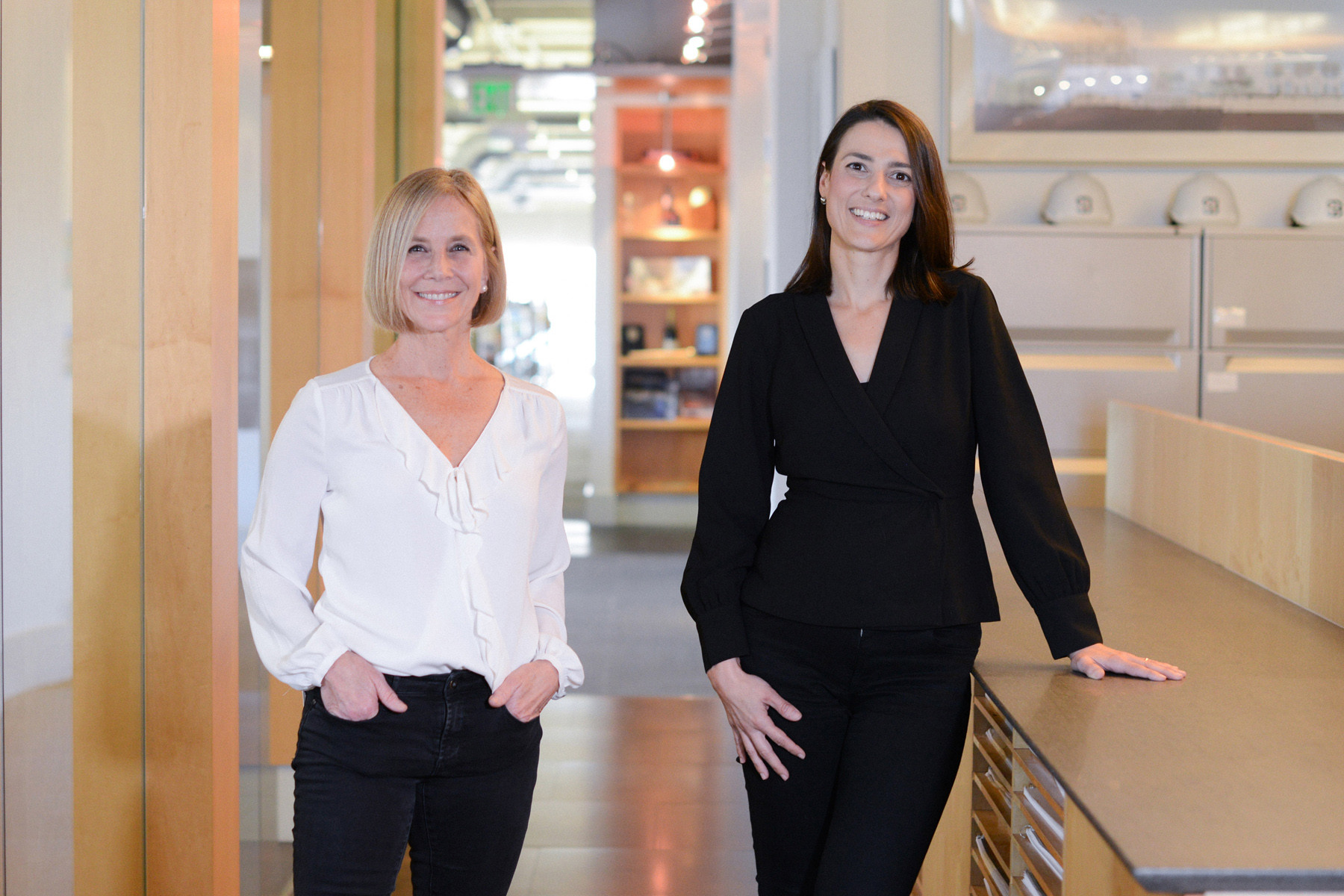
Can you each tell us a little about your background and your individual roles at SB Architects?
Jorey ‘Shosh’ Friedman, Vice President & Principal: When I was younger, I envisioned myself as a veterinarian, architecture was an 11th-hour suggestion from my father when I was applying to colleges. I added it to my mix of majors and left the decision up to fate. Cornell University’s School of Architecture accepted me, so Architecture it was!
I started to learn karate in my third year of college and completely fell in love, (I competed until I was 41 and then taught after that), not only with the sport but the Japanese culture. I spent several years living and working in Japan, which had a huge impact on me and my approach to design. Japan has a huge population with minimal space, so all the buildings were small, but thoughtfully designed, with incredible attention to detail.
After moving back from Japan, I started my career at SB Architects as a junior designer and I’m currently celebrating my 25th year! I evolved with the company and was promoted to Principal of our Miami office in 2015. My heart still lies in the early design phases of a project, so, I dive in whenever time allows.
Pinar Harris, Vice President & Principal: I was born and raised in Turkey and completed most of my education there, but I finished off my studies with a Masters Degree in the U.S. as this is where I wanted to embark on my career. The curriculum in Europe tends to lean more towards the technical side of the field, so it’s felt natural that my role at SB Architects has always been more focused on the project management side.
MS: I started working in hospitality in the early ‘90s, mainly in Asia, before coming back to the States to take the role as the design lead for retail and mixed-use at Callison. I started with a small team of around seven people, and when I left, 13-years later, we had hit 182!
Joining SB Architects was a chance for a fresh start, a new challenge, and I’d known both Scott and Bruce for years and respected all their work completed with Hill Glazier, so it was a great chance to see what we could accomplish as a group.
SL: I’ve always gravitated towards building and drawing. In high school, I started an antique business with my brother and I also worked for an architect in the afternoons after class to get a sense of the profession. I set my sights on Cal Poly based on their “learn by doing” ethic, and started at Cal Poly, as an architecture major, when I was 17. Whilst at college, I completed as much part-time work as I could with architects and developers and I was awarded a scholarship to study architecture and represent the Rotary Foundation as an ambassador of goodwill, at the University of Bath, England. After graduation, I knew exactly what my path needed to involve; I wanted to design and build globally, and I wanted to eventually own my own practice.
I had been at Hill Glazier Architects (now HKS) for 10 years, rising to the position of principal, when an opportunity came up at Sandy & Babcock. I knew the firm and I knew they had an incredible 40-year history but needed new blood, new ideas, new energy, so, I took on the challenge and was given the freedom to shape the company culture of design excellence and I pushed for a focus on hospitality. I was made a partner and worked with firm leaders to rebrand Sandy & Babcock to SB Architects, before taking the reins as President in 2007.
As a firm, we are constantly reinventing ourselves and figuring out ways to stay competitive in a fast-paced market. We explore the markets that we’re passionate about; whether that’s fitness, wellness, food and wine, international travel; because we believe that working on projects that feed our interests and excite us as designers, will make the guest feel exactly the same.
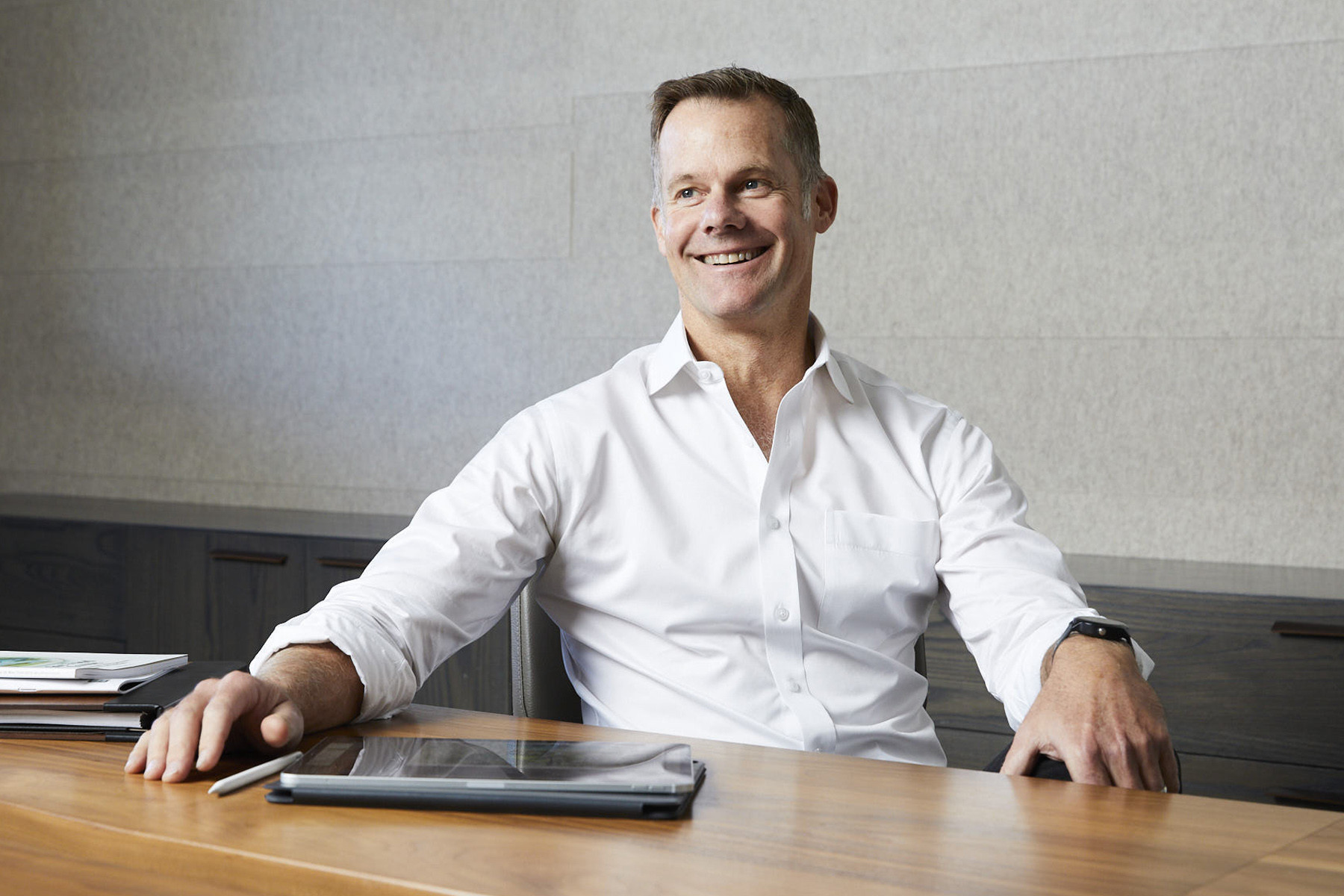
BW: I graduated from Arizona and moved to Southern California and worked at a hospitality design firm that focused on planning and designing golf clubhouses. I was laid off following a crash in the market, so I started to reassess where I wanted to be. I studied in Europe for a year during college and I loved how engaging and design-focused the cities were and San Francisco seemed to encapsulate the same dynamic feeling, so I made the decision to move to the Bay and began sending out applications. The 1993 downturn meant that a lot of firms weren’t looking to hire but I persevered sending almost 80 portfolios out, until one day Bob Glazier called and asked me to come in for an interview. My computer skills were minimal at this point, so I negotiated a basic hourly rate if he agreed to send me to an AutoCAD school to learn CAD. There were only around 12 people in the firm at that point, including Scott. The first project I worked on was a Four Seasons and it was the first time I’d been able to travel and stay on-site at one of the projects we were designing. I grew up staying in places like Motel 6 rather than a luxury Four Seasons, so the whole experience was exciting! During my time at Hill Glazier, I discovered that I was great at executing projects from start to finish, and over the years my role evolved into supporting the ‘big dream’ and doing the heavy lifting to get a project over the finish line.
I joined Scott at SB Architects in 2000. I think our USP is being a team of opportunists and entrepreneurs, when we’re given an opportunity, we look at the bigger picture and figure out a way to get there. For example, we started out on one of our hero projects, Calistoga Ranch as the Architect of Record, but we inserted ourselves into the process and pushed to showcase our skills, quickly being promoted to Design Architect. Calistoga Ranch was the foothold we needed to become a player in the industry and from there we were able to leverage this completed work and build a vision for the future of SB Architects, one where hospitality design would be the differentiator in the market for us. We reached a point where we were competing against our role models and winning, which fulfilled a dream and led to a flurry of new opportunities.
What’s the most important aspect of architecture and design within a hotel building?
BW: Currently, it’s the evolution of the guest and hotel employee experience. The needs of the guest are in a constant state of flux and we are tasked with creating spaces for people to celebrate the important milestones in life, designing backdrops for those memories and experiences to happen, which is an incredibly special and important role. The same can be said of the hotel employee experience, this can’t be forgotten. We need to create a design that allows them to provide the highest level of service to their guest but also an environment that allows the spirit of hospitality to thrive.
SL: Capturing and creating a sense of place, whether that’s through the architecture, planning, or soft programming of a hotel. Creating an authentic sense of place means getting to know the local community and the surrounding landscape
Calistoga Ranch is a great example, guests are drawn to the hotel because they want to reconnect with nature, they want to be immersed in the sights, sounds, and smells of the trees and stream, they want to relax on the natural shading provided by the historic Oak Trees on-site.
At every site, we strive to develop a design that aligns with the community’s vision for the future and accentuates the site’s unique heritage and character. We design in a way that allows the guest to get up close and personal with the place, culture, and locale while respecting and hopefully improving the place.
MS: For me, it’s that the hotel is site-specific. We want the guest to leave with a true insight into the locale and gain an appreciation of the place, even if they’re only there for a short amount of time.
PH: Meshing the guest experience with the ethos of a particular hotel location and program is one of the most important aspects of our design approach, that and our understanding of our client’s vision for the project.
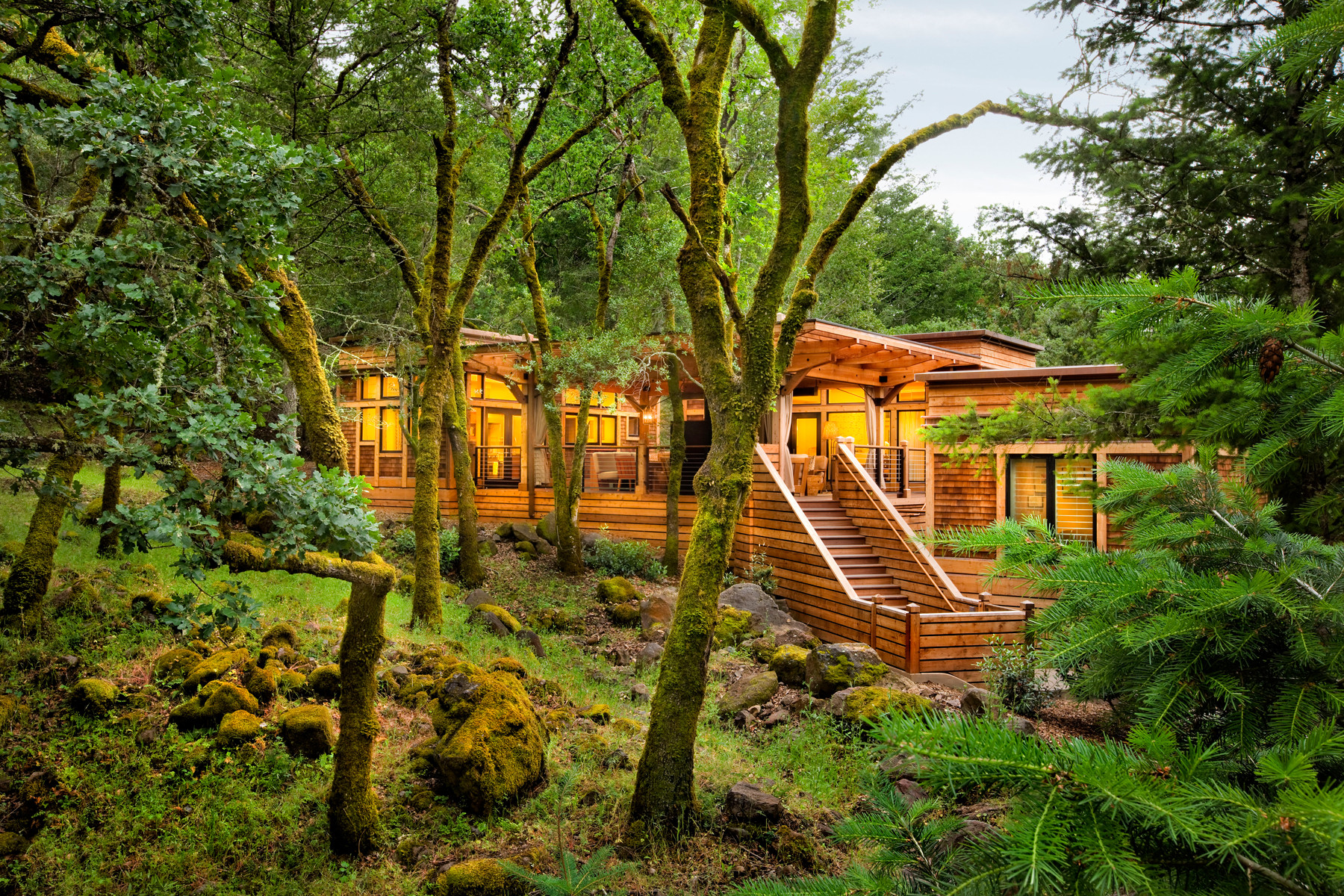
What challenges do you face as a team during big hospitality projects, and how do you overcome these?
JF: The biggest challenge is typically the schedule, often due to getting buy-in and approval from numerous parties; clients, developers, brands, local governments, planning committees, etc. We’re always fighting the clock and maintaining the design. The budget is, of course, another challenge, especially in the luxury sector. If the budget reduces during the design process, we must look for creative ways to cut back and make it work whilst keeping the integrity of the design intact. We look holistically for areas where we can reduce costs and fight for the key design elements that are going to make the destination iconic.
SL: My most challenging project was Calistoga Ranch. We had such insurmountable entitlement rules, and the site had long been zoned for camp-ground use, with a strict limit on stick-built construction. Rather than attempt to change the existing zoning, we chose to work within the existing guidelines. We had 200 14 by 30-foot trailers, 110 by 10-foot storage units, and 10,000 square feet of stick-built construction. We had to take all of these disparate parts and pieces and strict code and create a luxury five-star resort out of it, which was a challenge. But, as they say, necessity is the mother of invention. We were forced to do things we probably otherwise wouldn’t have done and that turned out to be the degree of departure from the norm needed to create an incredible project. All projects inherently are challenging, I’ve been doing this for 30-years and I’m yet to come across the elusive ‘easy project’, but we don’t want easy projects, we want projects that allow us to make a unique contribution and a difference in a way that no other firm can.
BW: My most difficult project to overcome was designing and building my own home. It required a level of trust, lunacy, and commitment because I did it all myself and mostly on airplanes flying back and forth for project work. Taking all that I had learned and imagining what it would be like to design, build and live in my own home was a huge challenge, and, you know, a giant risk. I distinctly remember the day the backhoe arrived and began digging a hole for the foundations, it was before SketchUp and all the visualization tools we have now, so I had no idea how it would turn out. Luckily, it was a great success and we’ve lived there for 10-years now.
I’m working on one project currently and they’re having difficulties with their construction budget. I approach it from the perspective of, what would I do if it was my own home? What are the most important parts that you need to keep, and what can you give up, helping my client realize their vision. This is a business where you need to have a lot of experiences, you need to fall down, you need to make some big mistakes and then, you need to learn from them.
SL: To add to that, you just can’t do anything by half measures. Personally, the biggest risk that I took in my career, was leaving a relatively comfortable job as a Partner at a pre-eminent hospitality firm, Hill Glazier, with the hopes of doing it better, which was a risk, and one I’m glad I took. We run SB Architects in the same way, we are all in and will do what it takes to run the firm successfully through tragedy (we sadly lost one of our partners, Joe Andriola, in a tragic accident in 2011), financial cycles, etc. We’re nimble enough to respond to anything that gets thrown at us, we fall back on our craft and rely on each other to get things done.
MS: I’m working with a client in Florida who is forming a development company to approach retail in a new, exciting way. Retail development is no longer just about placing basic, cookie-cutter boxes in an open space, it needs to be a multi-faceted community and cultural experience. Retail must offer something more emotional and personal than goods and discounts. We are taking the box apart and creating an urban mixed-use destination that is uniquely designed, walkable, and packed full of entertainment and F&B. It’s proving to be one of my most challenging but equally rewarding projects, and I think it’s going to be a landmark project for the firm.
PH: Managing large teams is exciting and challenging. It’s a long process so it’s critical that leadership effectively delegate and consistently prompt the team to focus on achieving the many milestones of such projects. We must constantly foster a sense of urgency that’s carefully balanced with great execution and quality work. This can only occur when we embrace the diversity of our team’s strengths and weaknesses and channel them towards a successful outcome.
What’s your most memorable project and why?
JF: Some of my fondest memories are in the design process. There are many projects throughout my career that I’ve poured my heart and soul into and for one reason or another, never made it to construction, but I thoroughly enjoyed working collectively with my team regardless. Tsinandali Wine Spa Resort in the Country of Georgia was one of those projects. It was a competition and at the time, American’s weren’t exactly welcome in Georgia, we were only scheduled to be on the ground for around 30-hours, and we were meeting the client for the first time on-site. The site, which was situated hours away from the city, was beautiful. We ended up winning the project, before handing the design over to a local architect to complete. It was a whirlwind project with a series of amazing cultural, always funny, experiences along the way. Our client was the warmest and most welcoming person, and he’s still, to this day, one of my favorite clients.
SL: Personally, my most memorable project was designing my own house because it chronicles a solid five years of my life, raising a family, assessing what’s important, and constantly re-evaluating what it takes to accomplish a true sense of place. I was constantly drifting between theory and reality, between budget or bust, between designing and actually pouring the concrete. It was an up-close and personal, risky experience, but probably the most personal expression of architecture that I’ve created.
MS: Mine is, 100%, the recently opened AMARA Hotel in Limassol, Cyprus. I spent the last 12-years, so, 20% of my life working on it! After over a decade of collaboration with our client, I was absolutely delighted to see this remarkable project complete.
BW: Of all the projects we complete as a firm, I really enjoy our single-family residential work. Our clients trust us to create their home, a backdrop for their memories and life’s experiences to happen. I thrive on the challenge of bringing hospitality, a true sense of place through the views, climate, and authentic design, into the residence. I think, to draw a concept on paper that a client is emotionally connected to, and then construct that concept to a high level of detail, is an incredibly satisfying feeling. Hearing your client express their love and gratitude in reference to space and built environment that you’ve created for them is an honor and accolade that is unmatched.
PH: Fort Lauderdale’s tallest structure, 100 Las Olas, was a very challenging, vertically intense mixed-use program, on a dense urban site of less than an acre. The result was a signature building that has been widely recognized in the South Florida marketplace.
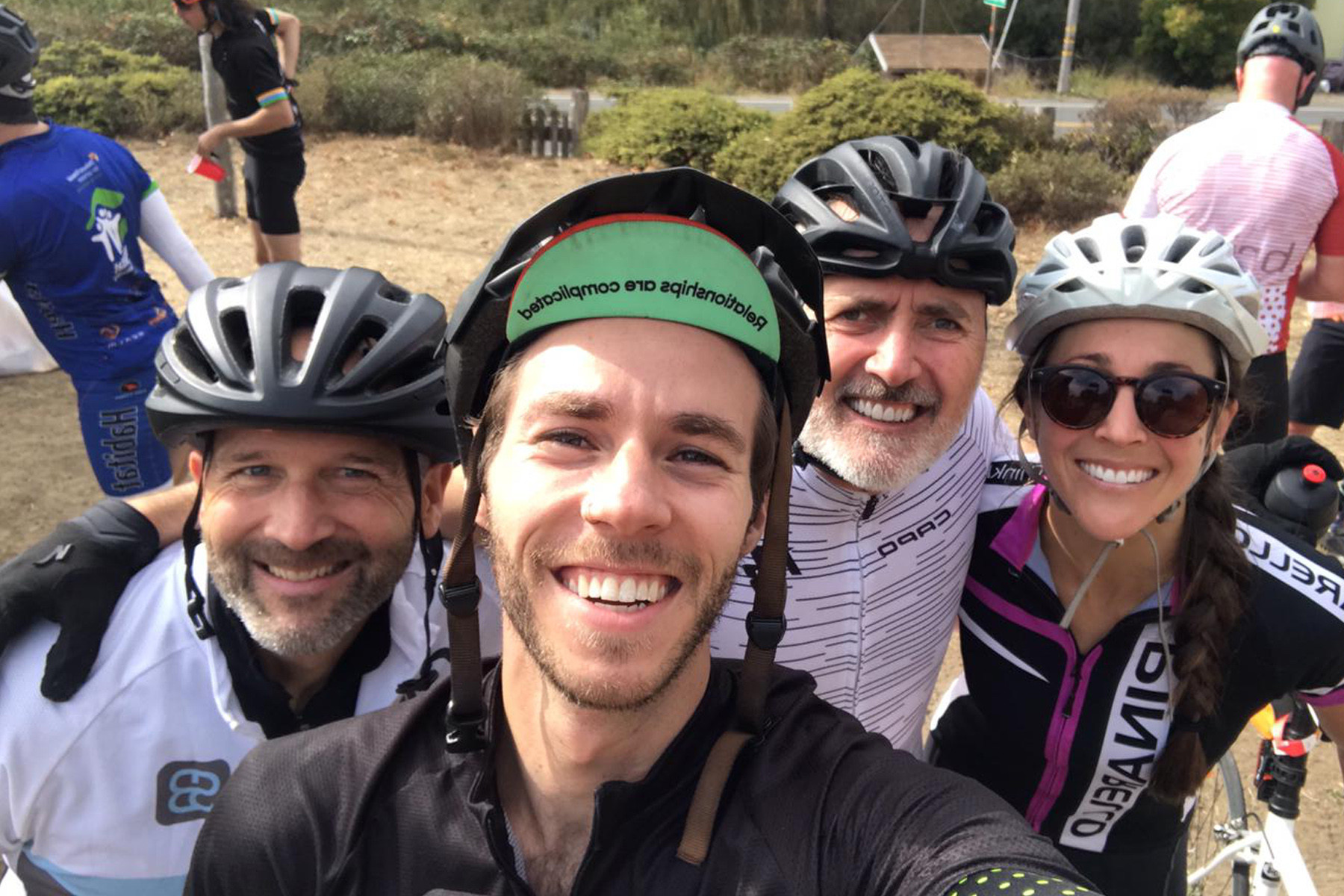
What do you think has been the key to SB Architects’ success over the last 60 years?
SL: Besides our strategic and agile evolution, our success, especially over the last 20-years comes down to our people. We have always had a good sense of balance in business and design. You need solid leadership, but we are the tip of the spear, it takes a committed team, with diverse design and technical expertise, alongside a support team of finance, admin, and marketing to work. At the end of the day, we’re running a company, so if we just single-mindedly focused on creating beautiful architecture, we wouldn’t be able to serve our client’s needs, because we would be out of business. SB Architects is a living, breathing organism and if we neglect or don’t support certain organs, we would decline and lose our competitive edge as design leaders in the sector. Without our marketing and PR team, this interview may not have happened!
What’s next for SB Architects?
JF: There are a couple of markets in the pipeline, including senior living and cruise lines, that we are looking to expand into. We are working on our first senior living project now in Florida and our client hired us, over firms who have completed similar work previously, because of our hospitality portfolio. Our experience and hospitality focus allows us to approach the design from a unique standpoint, we want to create a warm, welcoming, and ultimately hospitable environment for the end-user.
PH: We feel our greatest project is always just around the corner. We’re constantly in pursuit of achieving excellence in our work and we are ever vigilant of maintaining strong relationships with our current clients and striving to develop partnerships with new clients who are looking to make their impact in the built environment.
BW: The next 20 years are dependent on the passion of the leaders that we are mentoring to take over the firm. We’re in this nascent moment, where we’re giving the next group of leaders the opportunity to transition and evolve SB Architects, to write the next chapter in its history. It’s our role to give advice and tools to build the foundation for the future, and their job to harness their passions and beliefs, get in tune with each other and grow the firm, with a 100% commitment in that direction. It’s a different firm now than when we started, which means that they have a chance to look at what Don and Jim started with 60 years ago, look at where we are now, and redefine what we are going to look like in 2040. It’s going to take vigilance, commitment, and the confluence of great design and talent, coupled with great clients and opportunity.
SL: If you look at the pipeline, the way it existed 20-years ago when I started at SB Architects, it was almost non-existent, we had to build a pipeline. The projects that were on the horizon 10-years ago are coming to fruition now, but looking into the future, considering what’s currently ‘on the boards’, our future is looking exponentially better than it’s ever been. We have projects dotted across the globe, giving us a fantastic opportunity to continue to build and expand into these areas in both quantity and quality.
As a firm, we’ve never taken our foot off the gas or rested on our laurels. I think the process of growing and constantly challenging ourselves is the secret to our future because it means we will continue to stretch ourselves. We need to continue to inspire, continue to take chances and seize all opportunities, and, most importantly, keep the same entrepreneurial spirit that has gotten us to this incredible milestone.




